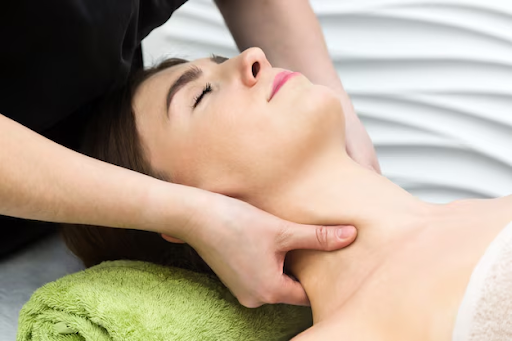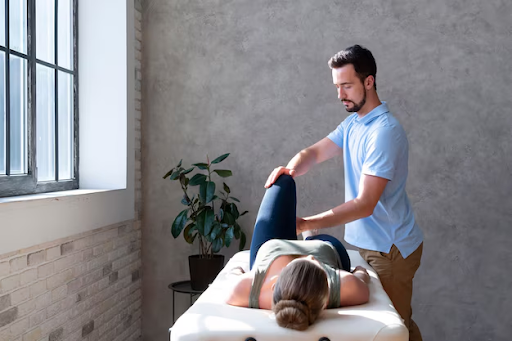
Osteopathy in Oxford
ARE YOU STRUGGLING TO MANAGE YOUR PAIN?
OSTEOPATHY IS A HANDS-ON THERAPY THAT AIMS TO TREAT THE ROOT CAUSE OF YOUR PAIN USING JOINT MOBILISATION, SOFT TISSUE MASSAGE & STRETCHING.
Why VISIT SOPHIE AT ‘KOP’?
AS AN OSTEOPATH AND MOTHER, MY PASSION FOR OSTEOPATHY GOES BEYOND A PROFESSION, ITS A WAY OF LIFE FOR ME. SINCE CHILDHOOD I HAVE ALWAYS CHERISHED THE ABILIITY THAT OUR BODIES CAN SELF- HEAL AND THAT WE ARE ABLE TO HEAL OTHERS WITH BOTH HANDS ON THERAPY AND WITH KNOWLEDGE AND SUPPORT.
EMPATHY AND COMPASSION DRIVES MY PRACTICE, PERSUING ME TO CREATE AN ENVIRONMENT TO CONNECT WITH THOSE SEEKING RELIEF FROM BOTH PAIN AND DAY TO DAY STRESSES. IN THIS FAST-PACED WORLD I BELIEVE IN HELPING PEOPLE TO FIND MOMENTS OFCALM ADMIST THE CHAOS.
HAVING BUILT UP MY PRACTICE OVER 12 YEARS, I AIM TO BOTH RELIEVE A PATIENTS PAIN AND ALSO HELP THEM TO MANAGE THEIR PAIN, LONG TERM.
.webp)
.webp)


A Decade of Healing and Education
OVER THE LAST 12 YEARS, I HAVE BEEN PASSIONATELY SERVING THE OXFORD AND OXFORDSHIRE AREA BY HELPING TO ALLEVIATE PAIN AND BY EMPOWERING PATIENTS WITH THE KNOWLEDGE AND TOOLS FOR EFFICIENT SELF-MANAGEMENT. I HAVE TREATED AND EDUCATED COUNTLESS INDIVIDUALS, HELPING THEM NOT ONLY FIND PAIN RELIEF BUT GUIDING THEM TOWARDS THEIR LONG-TERM PAIN MANAGEMENT STRATEGIES.
Long term health goals
AIMING TO STAND OUT IN MY APPROACH TO OSTEOPATHIC CARE USING LONG-TERM SELF-MANAGEMENT AND PATIENT-CENTERED CARE AND OFFERING TAILORED TREATMENT PLANS TO INDIVIDUAL NEEDS, WHICH AIMS FOR MORE SUSTAINABLE RESULTS.
BY FOCUSING ON BUILDING STRENGTH AND FLEXIBILITY AND IMPROVING CORRECT BIO-MECHANICS, I AIM TO EQUIP PATIENTS WITH THE SKILLS TO PARTAKE IN THEIR RECOVERY JOURNEY ACTIVELY. UTILISING PROACTIVE MEASURES TO ENSURE LONG-TERM PAIN RELIEF, FOSTERING IMPROVED OVERALL WELL-BEING AND ENSURING THAT PATIENTS FEEL FULLY SUPPORTED AND CONFIDENT IN THEIR JOURNEY TO BETTER HEALTH.
Jeanette
Karen
Jacki
Emma
Felicity
Ben
John, Abingdon Road, Oxford
Steph
Alan
David
Brian
latest blog
Stay informed with Sophie's latest blog articles
Book appointment
Sophie specialises in providing pain relief and self management techniques through the use of hands on therapy and health care expertise.
FAQ
Chiropractic, Osteopathy, and Physiotherapy are three similar yet distinct therapeutic approaches, all aiming to alleviate pain and enhance structural and functional well-being. Chiropractors prioritise a healthy nerve supply, while Osteopaths emphasise the harmony between body function and a well-functioning blood supply. Chiropractors focus more on spinal manipulation, whereas Osteopaths use a broader range of techniques. Physiotherapists take a less hands-on approach, often using machines like ultrasound and laser therapy, along with prescribing home exercises. Osteopathy is characterised by a holistic approach addressing the whole body and its underlying causes. I always adhere to this philosophy, treating patients with the same care they would want for themselves.
My treatment sessions are up to 1 hour for the initial session and 30-40 minutes for follow-up appointments.
Osteopaths' patient demographic encompasses a diverse range of individuals, spanning from the young to the elderly, manual laborers to office professionals, expectant mothers to children, and athletes. These patients seek treatment for a wide spectrum of conditions, such as back pain, repetitive strain injuries, pregnancy-related posture changes, postural issues resulting from driving or workplace strain, arthritis-related pain, and minor sports injuries.
Osteopaths employ a diverse array of gentle manipulative techniques tailored to individual factors like age, fitness level, and diagnosis. Treatment varies for each patient but commonly includes methods like soft tissue massage and joint articulation to alleviate tension, enhance muscle flexibility, alleviate pain, and improve joint mobility. Occasionally, during joint manipulation, you may hear a 'click,' akin to the sound of cracking knuckles, which is a normal occurrence.
Osteopathic soft tissue treatments may occasionally induce mild discomfort during the procedure. Your osteopath will provide guidance on what to anticipate and encourage you to communicate if you experience any discomfort. It's common to feel slightly stiff or sore after treatment, but this is a typical and healthy reaction that typically dissipates quickly. Osteopathy is widely regarded as a safe and effective form of treatment, with the majority of patients experiencing significant improvement in their well-being as a result.
Sessions required vary from patient to patient, depending on the diagnosis and the way that patients respond to treatment. Sophie will discuss with you the best approach for your diagnosis.
You do not need to see your doctor first if you are paying for your own treatment. However, some insurance companies require you to see your doctor first. Osteopathy is available on the NHS in some areas – and national guidelines say it should be available everywhere for low back pain. Osteopaths are skilled in diagnostic techniques and trained to identify when a patient needs to be
referred to a GP.
Many private health insurance policies include coverage for osteopathic treatment. To potentially claim for a treatment course, it's essential to inquire with your insurance provider beforehand to determine the extent of coverage available and whether a referral from your GP or a specialist is required. This proactive approach ensures you have a clear understanding of your insurance benefits in relation to osteopathic care.
Osteopaths undergo a comprehensive four to five-year undergraduate program, akin to a medical degree but with a stronger focus on anatomy and musculoskeletal medicine, which includes over 1,000 hours of osteopathic technique training. It is mandatory, under law, for all osteopaths to register with the General Osteopathic Council (GOsC), and it is an offense for anyone not registered to refer to themselves as an osteopath. Notably, the British Medical Association advises that doctors can safely refer patients to osteopaths. Furthermore, osteopaths are committed to ongoing professional development, requiring them to complete a minimum of 30 hours of Continuing Professional Development each year throughout their careers.
The standards of osteopathic training and practice are provided and promoted by the General Osteopathic Council, the profession’s statutory regulator established under the Osteopaths Act 1993.
Osteopathy boasts a strong safety record, with evidence indicating it ranks among the safest medically associated professions. Osteopaths receive training to discern complaints or conditions for which osteopathic treatment may not be suitable, and in such cases, patients are referred to the appropriate healthcare provider. Similar to how a general practitioner prioritises safety when prescribing medication for patients, Osteopaths also prioritise safety as their foremost concern when determining the most suitable treatment approach.
The most common side-effect is some general aching/soreness for 24-48 hours, however, most people do not experience any side effects at all.
The National Institute for Health and Care Excellence (NICE) https://www.nhs.uk/conditions/osteopathy/ is an independent public body that provides national guidance and advice to improve health and social care in England. NICE recommends manual therapy to be an effective form of treatment of lower back pain. Working within these guidelines osteopathy can provide effective pain relief for many complaints such as neck pain, back pain, headaches, joint pain and sciatica.


.webp)
.webp)

%20(1).png)

